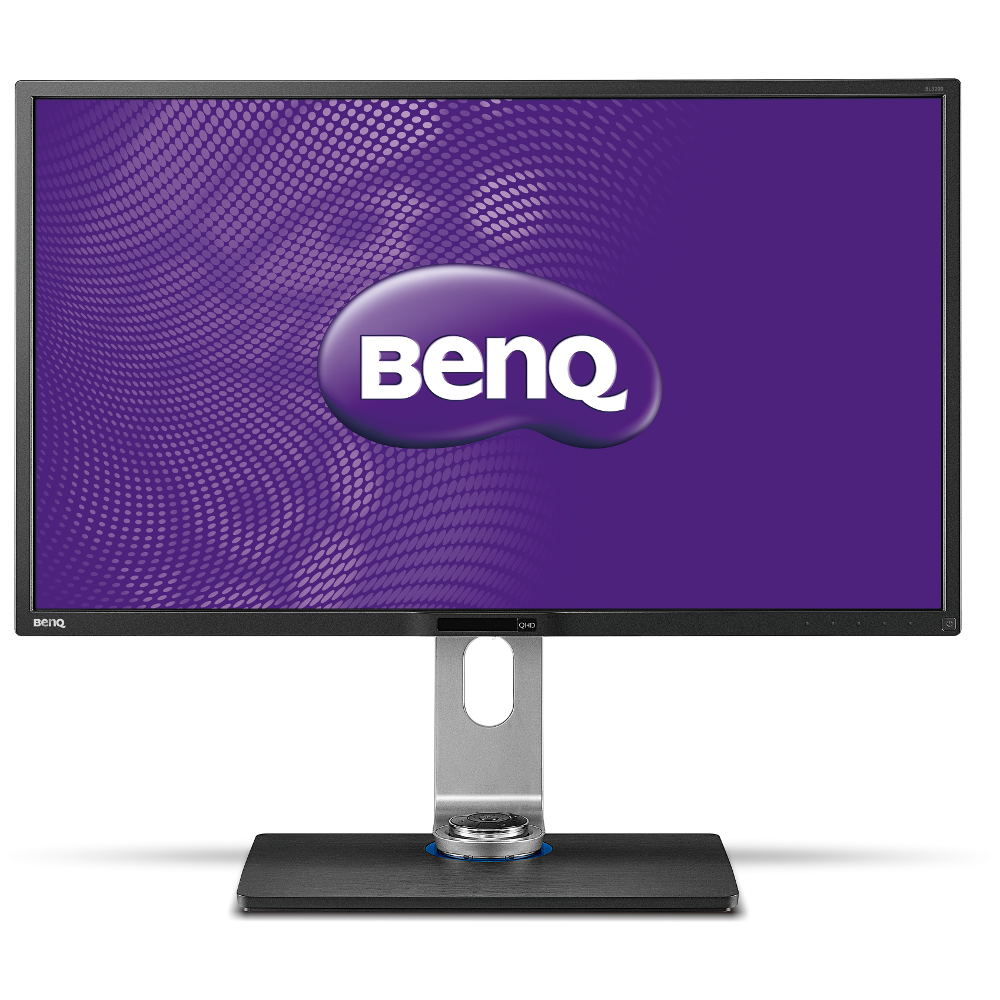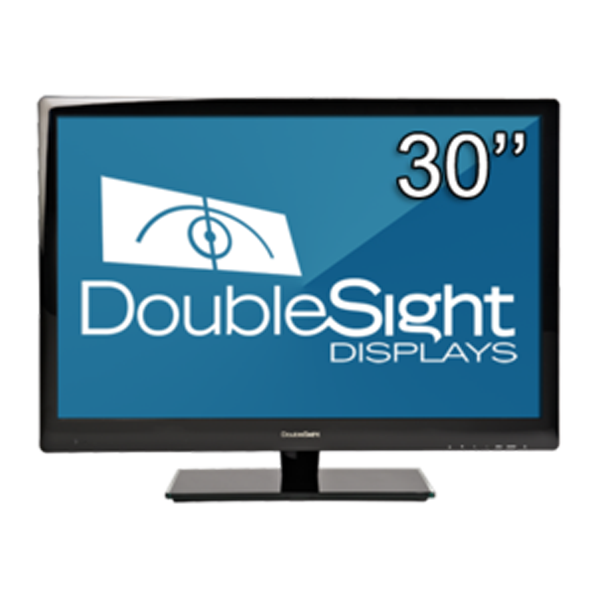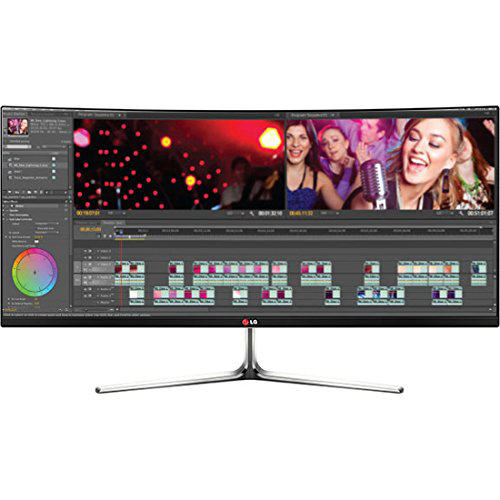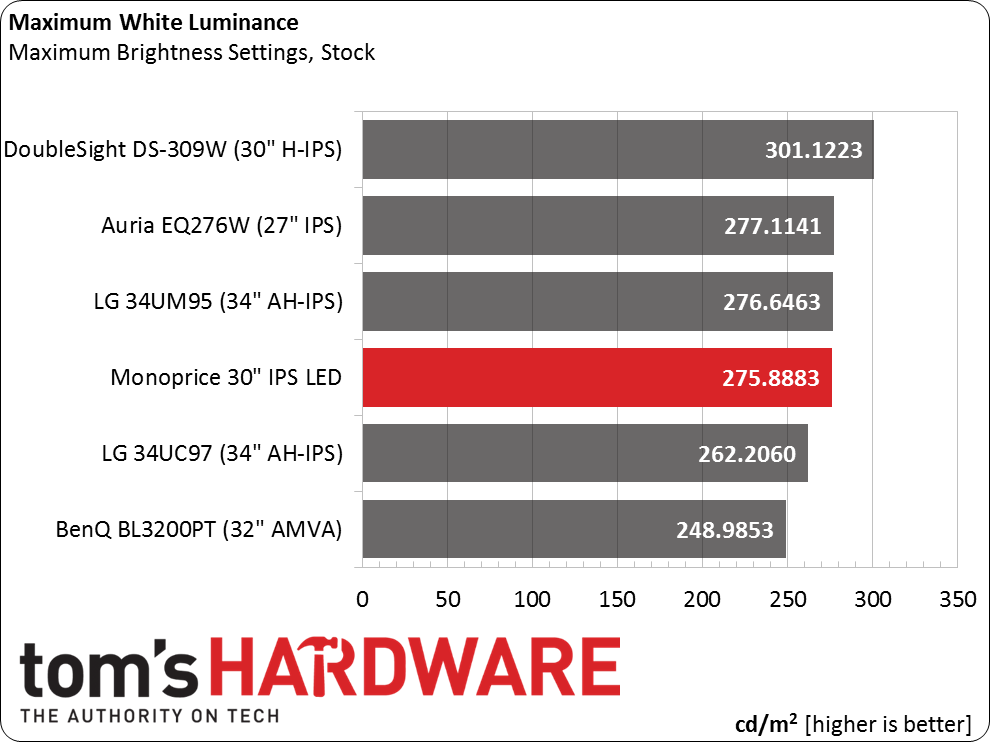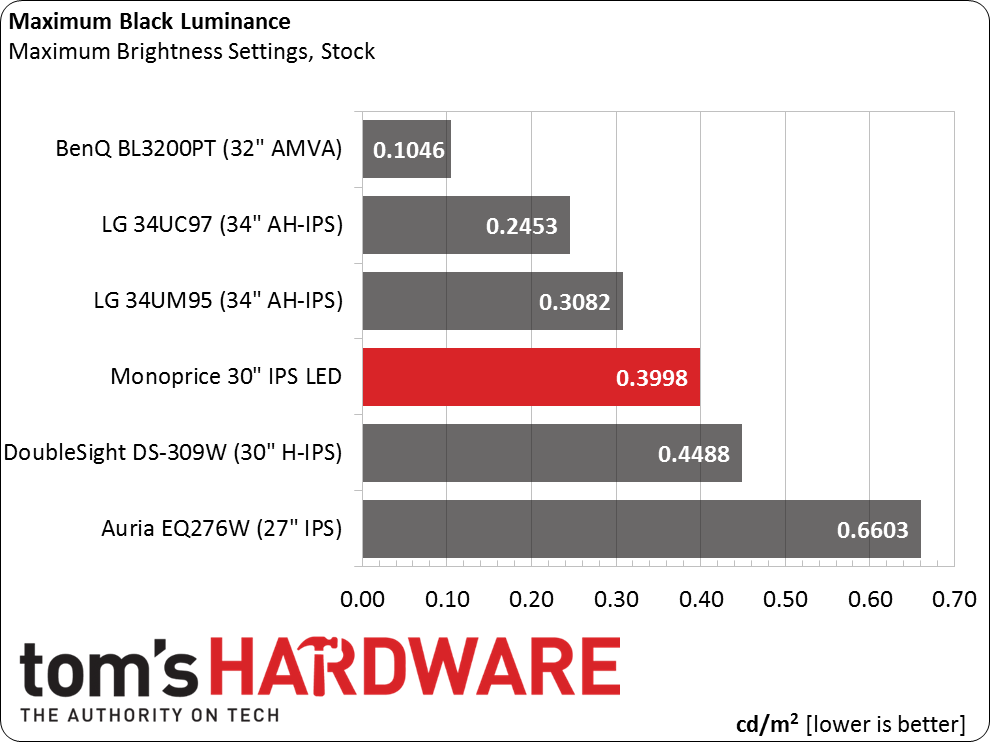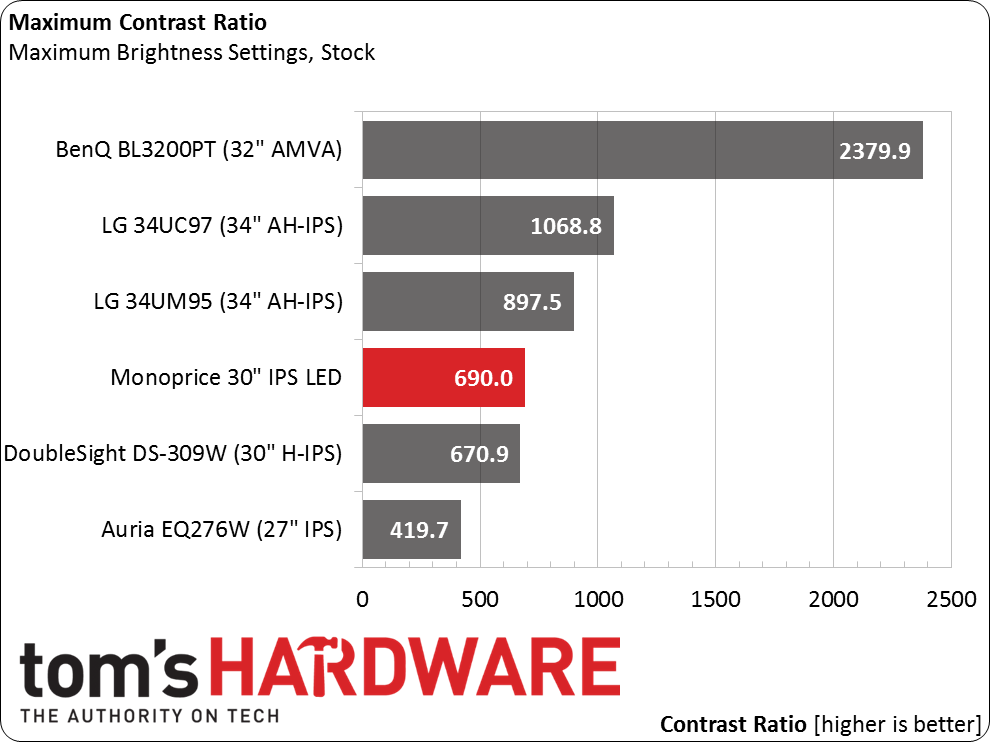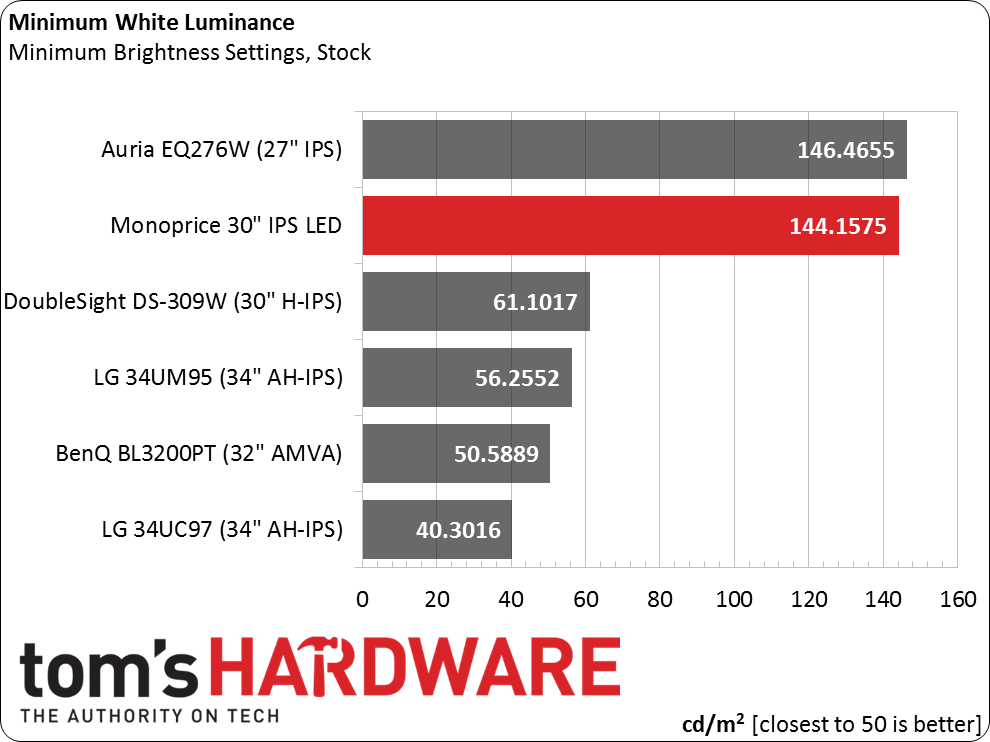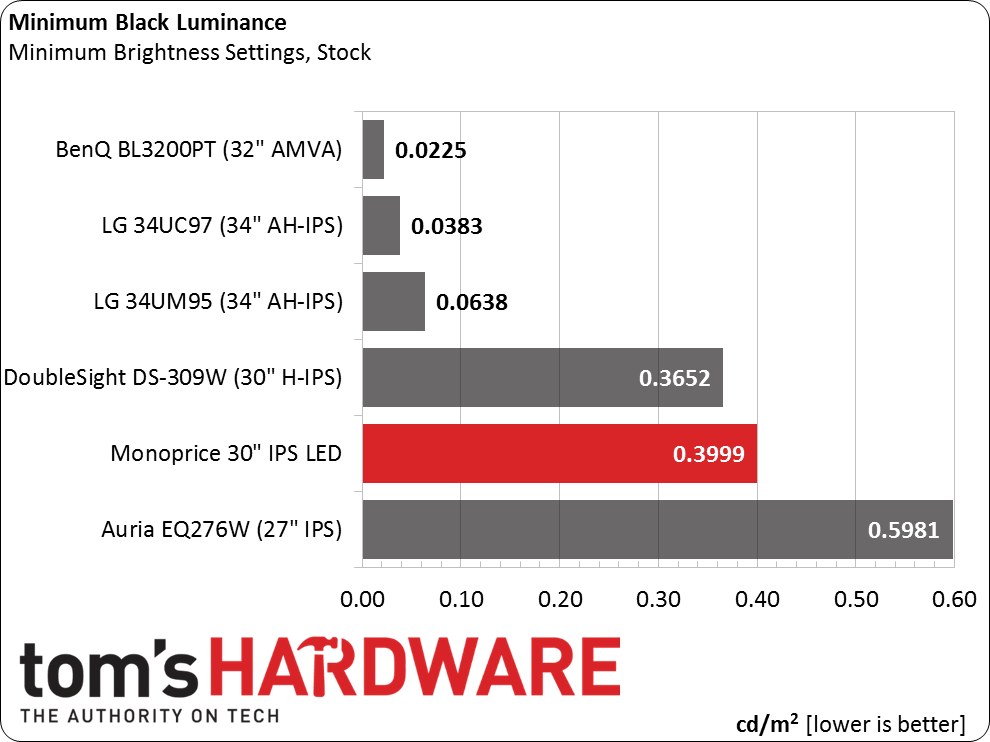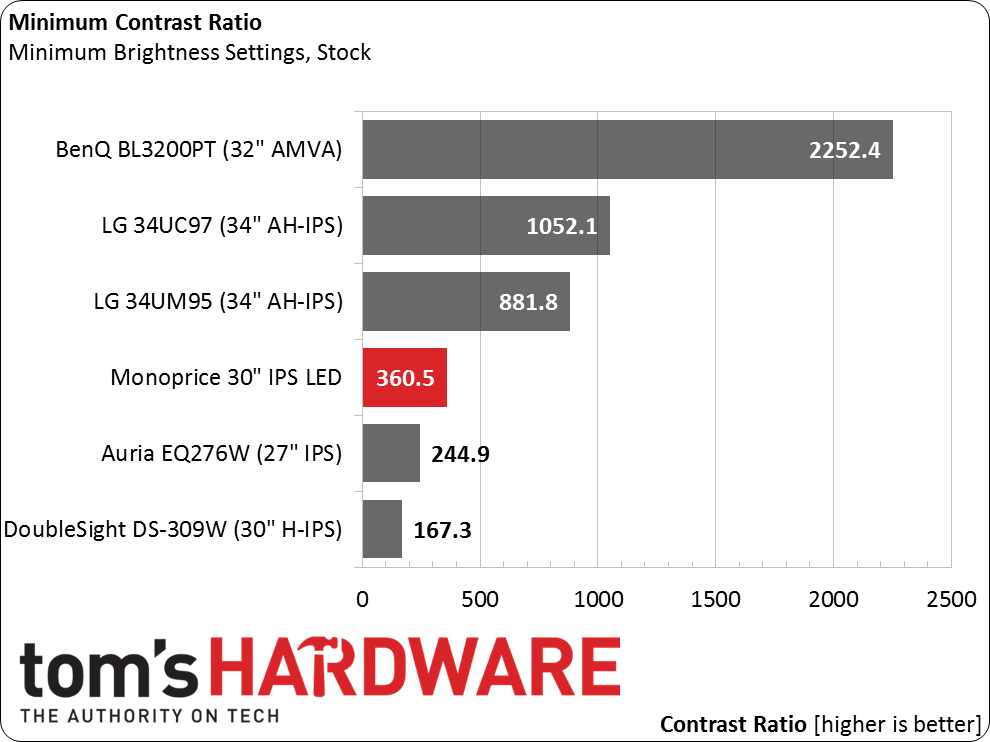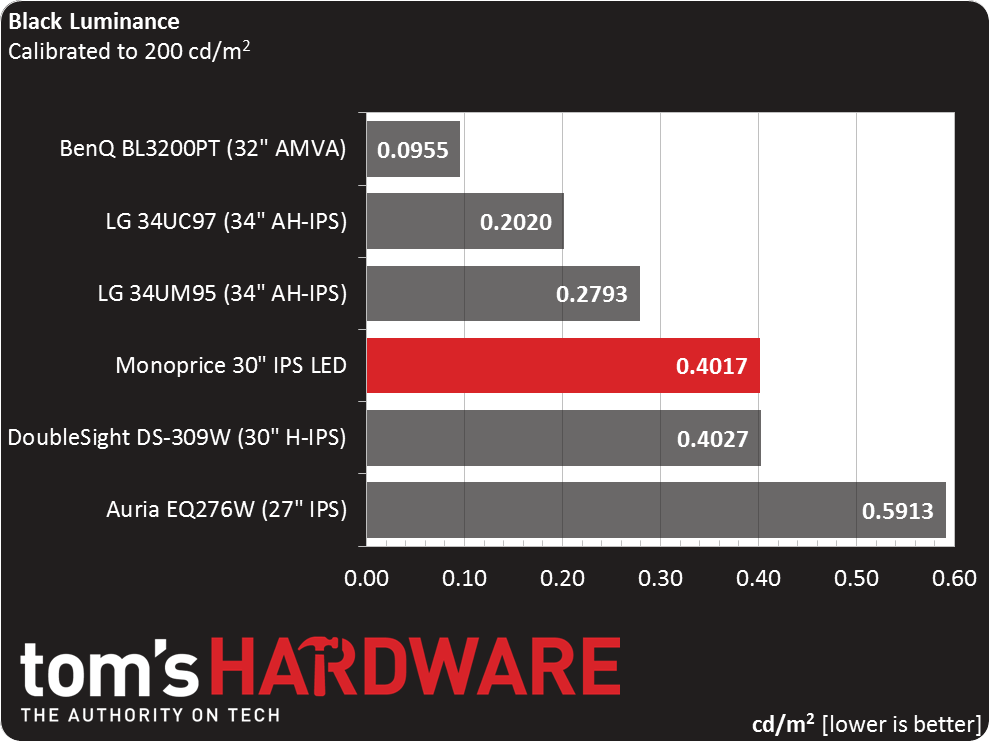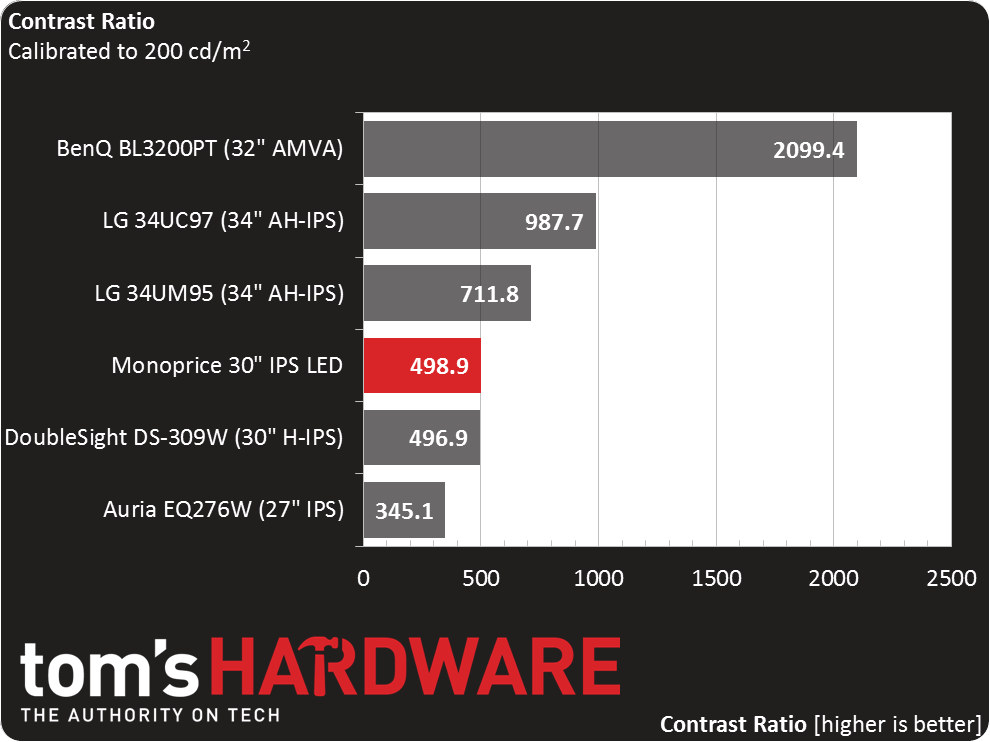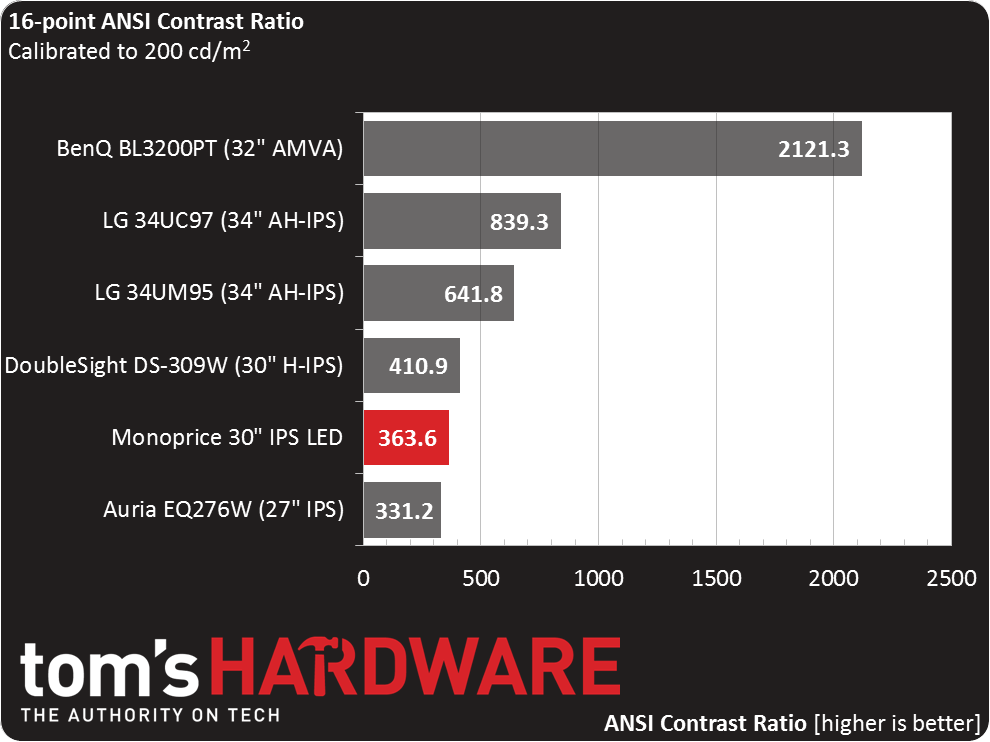Monoprice 30-inch IPS LED Monitor Review
In the land of value-priced peripherals, Monoprice is king. After adding monitors to its many offerings, we decided to check one out in our lab. This 30-inch IPS LED screen definitely qualifies as jumbo. Today we see how it performs.
Why you can trust Tom's Hardware
Results: Brightness And Contrast
To read about our monitor tests in-depth, please check out Display Testing Explained: How We Test Monitors and TVs. Brightness and Contrast testing is covered on page two.
Uncalibrated – Maximum Backlight Level
We don’t have too many jumbo screens in our review database, so we’re filling out the group with LG’s two ultra-wide models, the 34UM95 and 34UC97. We’re also including the BenQ BL3200PT, which is probably the Monoprice’s closest competition at present. The DoubleSight DS-309W is a 30-inch 16:10 monitor as well, and even though we reviewed it nearly two years ago, it’s still available for sale. We bring the count up to six with Auria’s EQ276W, another value-priced QHD/IPS display.
Monoprice claims a max brightness of 350cd/m2, though we couldn’t quite get there by just turning up the brightness all the way. A result of 275cd/m2 is enough output for any indoor use we can think of, but there is a way to run it up to over 474cd/m2: turn on the dynamic contrast option. We don’t normally recommend this. If you need the extra light, though, it’s the only way. We’ll show you its effects throughout the contrast tests.
The max black level falls mid-pack. An outcome of .3998cd/m2 isn’t too bad, though we discovered that lowering the brightness control does not reduce the black level like it should.
We’d like to see higher contrast, though it seems the DoubleSight and Auria displays come in even lower. The top three monitors perform well, albeit at a higher cost. You’ll have to decide if an extra 310:1 is worth the additional $200-300.
Uncalibrated – Minimum Backlight Level
Dropping the brightness slider to zero doesn’t have much effect on the overall output level. In fact, at this point, we don’t believe it actually modulates the backlight. Rather, it seems to work like an HDTV. Read on to see what we mean.
The minimum black level is exactly the same as the maximum. That tells us that brightness is actually a black level control with no usable adjustment range. Lowering it at all simply crushes detail and destroys gamma accuracy.
Get Tom's Hardware's best news and in-depth reviews, straight to your inbox.
Because of the major loss in contrast, we recommend maxing the Monoprice’s brightness control. It’s the only way to avoid clipping the darkest image elements. It’s also the only way to achieve a decent gamma measurement.
After Calibration to 200cd/m2
Calibration doesn’t cost us much in terms of black levels. A difference of .0019cd/m2 is not visible, even in a side-by-side comparison.
Calibration really affects overall dynamic range because we have to use the contrast slider to control peak output. But among our comparison group, Monoprice's offering isn't the worst-performing monitor. The real takeaway is that we should all wish for more VA panels. Its advantage over IPS is significant in our contrast tests.
ANSI Contrast Ratio
The ANSI result is harmed by a visible hotspot in the lower-right corner of our review sample’s screen. Not every sample will perform the same way, so your mileage may vary. If not for that fact, this result would have been closer to the calibrated contrast number.
Current page: Results: Brightness And Contrast
Prev Page OSD Setup And Calibration Next Page Results: Grayscale Tracking And Gamma Response
Christian Eberle is a Contributing Editor for Tom's Hardware US. He's a veteran reviewer of A/V equipment, specializing in monitors. Christian began his obsession with tech when he built his first PC in 1991, a 286 running DOS 3.0 at a blazing 12MHz. In 2006, he undertook training from the Imaging Science Foundation in video calibration and testing and thus started a passion for precise imaging that persists to this day. He is also a professional musician with a degree from the New England Conservatory as a classical bassoonist which he used to good effect as a performer with the West Point Army Band from 1987 to 2013. He enjoys watching movies and listening to high-end audio in his custom-built home theater and can be seen riding trails near his home on a race-ready ICE VTX recumbent trike. Christian enjoys the endless summer in Florida where he lives with his wife and Chihuahua and plays with orchestras around the state.
-
MxMatrix I saw an ASUS UHD PB279Q (ips panel) for roughly the same price.Reply
So I'm not even going to bother for 30" if its possible to get UHD. -
mitch074 I really wonder why Tom's never evaluates Iiyama screens - the ProLite XB2776QS is a 27" 2560x1440 IPS screen, available at the time for $450 with a zero pixel defect, 3 years on-site replacement warranty, sRGB factory-calibrated profile that does work... And it came out in 2013. I own one, and although its reliability initially left much to be desired (3 replacements for defects : one light leak, one dead subpixel, one power issue), it was replaced every time in less than 72 hours by Iiyama - and yes, including once when I picked up one dead (black) subpixel. It has since been replaced by a model with the very same specifications and prices, but more reliable electronics.Reply -
nekromobo Why wouldn't a 34" 800$ IPS 21:9 (Dell U3415W) compete with this or the other similar displays. Also the external power brick is big nono unfortunely :(Reply -
Karsten75 It seems Overlord isn't selling any more monitors, so I guess references to Overlord monitors should be removed?Reply -
achoo2 With all the "though this feature is not described on the website" items and my unfamiliarity with the brand, I'd be reluctant to buy this monitor for fear that my device wouldn't match the review sample.Reply -
DisplayJunkie As much as we all love Monoprice for their excellent pricing and quality on things like cables, this display is another catastrophic failure, or more likely an attempt to pander to the uninformed:Reply
- no backlight control. Right out of the gate, the display is useless. How can they fail so badly at the most basic and crucial aspect of a monitor? This is an exact repeat of the Zero-G by the way.
- contrast sucks and attempting to control backlight level makes it even worse. Again same as the Zero-G.
- Adobe RGB accuracy is not even good enough even for amateur photo/print work (and that's *after* calibration with a $250 device!), and no sRGB mode means the display is useless for everyone else / every other usage scenario
All I see is pandering to the uninformed, trying to sell poorly implemented panels to those who are impressed by the large size and resolution.
If it had a functional backlight control and cost maybe $500 max then it would be worth considering. -
bit_user Something I've always wondered about Monoprice is whether they actually: a) design anything themselves, b) produce specifications and select bids from manufacturers, or c) just import products that (usually Chinese) companies are already making.Reply
Can someone please clarify?
-
DarkSable Reply15244178 said:I really wonder why Tom's never evaluates Iiyama screens - the ProLite XB2776QS is a 27" 2560x1440 IPS screen, available at the time for $450 with a zero pixel defect, 3 years on-site replacement warranty, sRGB factory-calibrated profile that does work... And it came out in 2013. I own one, and although its reliability initially left much to be desired (3 replacements for defects : one light leak, one dead subpixel, one power issue), it was replaced every time in less than 72 hours by Iiyama - and yes, including once when I picked up one dead (black) subpixel. It has since been replaced by a model with the very same specifications and prices, but more reliable electronics.
I've got one of those too, but because the model I ordered wasn't available in my region, they've never supported me... instead trying to get me to communicate with a german company that offers no warranty.
While iiyama monitors are very good, I've noticed that they almost all share two issues:
1) coil whine from the power subsystem. Every single iiyama I've owned either has cheap caps or just not enough insulation, and has audible coil whine even when off.
2) Poor support for low brightness. This is actually a really annoying one for me - iiyama monitors are bright and don't have enough support on the low end; even at its lowest brightness setting with contrast down just above where it would drive me crazy, my iiyama is still brighter than any other monitor I've had.
